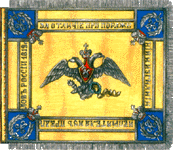During the last several month I had a pleasure and honor of fighting in a maneuver against Jim Pfluecke in the Battle of Bergen (to be more precise the First battle of Bergen). The whole unfortunate Holland campaign of 1800 is one of the points of interest for me. So can’t help writing a detailed after action report on the battle.
I. Historical accuracyMost of my knowledge about the campaign as a whole originates from the marvelous book by Milyutin. It’s available for free online at
https://www.runivers.ru/lib/book3090/26329/ . It may be 150 years old but I saw nothing that could compare to it as regards the details of description of this campaign. The only difficulty is that the book is in Russian. Most of the statements here are based on the material of the book. I also used several of the regimental histories and bios of the Russian participants. For the British side the “Waste of blood and treasure” by Ball (
https://www.amazon.com/Waste-Blood-Trea ... d+treasure) could be of use. For the French and Batavians there are primary docs by Brune somewhere in the Gallica. The Secret expedition by Geert van Uythoven is regretfully delayed one more time and is not awailable at the very least till December this year.
Order of battleThe order of battle for the Russian force involved appears to be incorrect. It includes several units that didn’t take part in the battle, namely the Emme (Pavlovsk) musketeers regiment and squadrons Leib-Hussars. Their absence may be confirmed not only by the oobs in the Milyutins wok but also by the casualties reports published there as well as by regimental histories. On the other hand some of the units are not present, the most important being the Southof (former 1st) Jaegers. It’s presence is confirmed by the casualties report, it has lost about 10% of the initial strength. Similarly some of the units appear to be weaker than they ought to be. Strick and Osipov (not Ostpov as in game) converged grenadiers battalions were apparently twice as strong compared to the game.
But all these inconsistencies rule each other out. Milyutin mentions the Russian strength at 8800. In the scenario it’s 9200. The force in the scenario is a bit stronger in cavalry, but has no light infantry capability.
British, Dutch and French from what is mentioned by Milyutin appear to be more or less correct.
ArtilleryThe number of pieces and their calibers are form a difficult question. Milyutin does not directly mention neither the number nor calibers of guns that took part in the action. In particular it’s stated that most of the pieces were left behing. It’s also stated that some of the guns did take part in the battle, but no clue how many of them. The number and calibers of the French/Batavian is also not directly stated. It’s clear from the descriptions that the gunfire from the French side was heavy and didn’t allow the Brits to attack successfully. So the number and composition of the guns may be considered as correct in general if not in particular details.
A strange change was made as regards the fire range of both Russian and British 6 lb guns. It was decreased to 7 hexes making them only a bit more useful than regimental 3 or 4 pounders. This change is made in this scenario only and I could find a single reason for it.
Release timesWe played the historical battle which tries to simulate the actual course of battle with units being fixed for some time. It correctly leaves most of the Russian force free since the very beginning (4:00). The brits and one of the Russian brigades release only at 6:00 From the allied side everything seems correct and according the historical dispositions and the course of battle.
Unfortunately it’s not the case for the French side. Historically GLt Herman had launched an attack before the planned time at 4:00. Russian force overhelmed the French outposts and reached Bergen. Here the defenders of the town were rather easily driven back from it. And only after that, when most of the forces arrived the French were able to defeat the Russians, mass rout them and chase till the initial positions. As it turned out to be in the scenario the head of the Russian column even with the best will and no delays would reach Bergen only when the main French force is already in the town. Accordingly no chance to successfully attack the town, leave alone occupy it. Apparently in order to increase the historical accuracy the French force needs to be released at least an hour later.
Stacking limitationsThe stacking limitations appear to be far too high for the warfare of the era. It was decreased to 1050 infantry and 350 cavalry per hex. The guns were made in such a way that a battery could be deployed together with a large battalion. On the other hand the number of guns was limited to 10 by a house rule.
Overall assessmentThe mistakes and drawbacks notwithstanding, the scenario provides more or less accurate figure of the situation in battle and the opposing forces. The mistakes are not very important and compensate each other.
II. Strategy employedTo be continued
_________________


Leib-Guard Cuirassiers Regiment's
General-Fieldmareshal Count Anton Kosyanenko
Commanding Astrakhan grenadiers regiment
2nd Grenadiers Division, Russian Contingent





